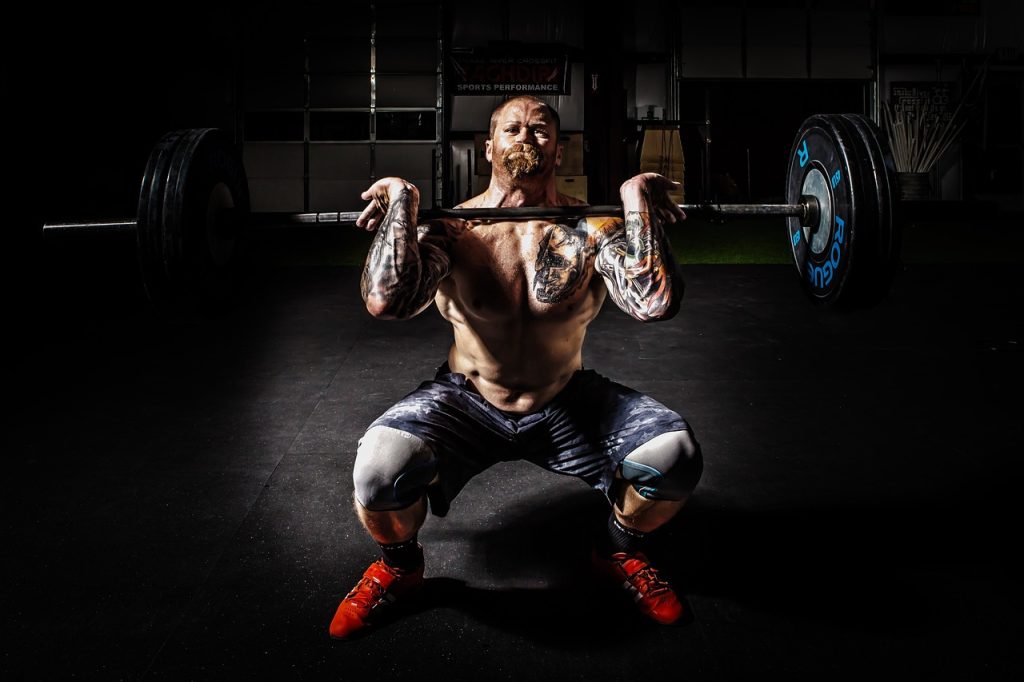Work on the figure cannot be limited only to the upper body. Leg training is a must-have of any training plan and should not be overlooked under any circumstances! Leg exercises, which for years were neglected and associated primarily with professional bodybuilding, have now returned to the favor of all lovers of physical activity. Where to start leg training? How to build powerful legs? How many times a week should you do leg workouts?
Why was leg training often overlooked?
Looking back, you might get the impression that exercising the legs and glutes were mostly reserved for hardcore bodybuilders and bodybuilders. Lovers of recreational physical activity, especially women, were quite reluctant to perform strength leg training. This was primarily due to the fear of excessive muscle mass growth.
Strength leg exercises were equally reluctant to be performed by runners, footballers or cyclists. Mainly because too much muscle mass can cause some limitations in endurance disciplines. Nevertheless, properly planned leg workouts do not only focus on building muscles, but also on increasing their strength and endurance, which is extremely important in the case of the above-mentioned sports. So nothing stands in the way of combining strength training with aerobic activities and thus maintaining a slim figure.
Knee injuries are another reason to avoid leg training. These concerns are justified in the case of incorrect exercise technique. Then the risk of injury increases, which can exclude you from training for a long time. Correct technique is therefore crucial. And it’s not just about leg exercises, but training for each muscle part. With proper technique, exercising the legs and buttocks is a great support for protecting joint connections. Especially exercising the quadriceps muscles of the thigh gives the knee joints great protection.
Where to start leg training?
Measure your strength against your intentions! Before starting leg exercises, it is worth remembering that leg training should be properly adapted to your abilities and level of experience. The aforementioned correct exercise technique, in addition to reducing the risk of injury, also affects the effectiveness of muscle mass and strength development. Inexperienced people starting their adventure with the gym should consult a trainer or instructor to assess their own abilities and learn the technique of performing individual exercises, including those involving a part of the leg muscles.
A good leg workout means:
- selection of appropriate exercises – the plan should include all parts, i.e. quadriceps and biceps muscles, buttocks and calves,
- work in the full range of motion,
- warm-up and work sets, especially before multi-joint exercises such as squats or deadlifts,
- appropriate exercise footwear that provides stability,
- rest – between leg workouts, it is always worth taking a day off, which will allow the neuromuscular system to regenerate.
How to build leg muscles quickly?
Leg training, like other muscle groups, requires time and systematics. There is no universal recipe for how to build leg muscles quickly. The effectiveness of the entire training program is considered in a long-term perspective, and leg exercises are one of the elements of the complex process of working on the figure. Genetics is a separate issue, which means that some people will have an innate predisposition to develop leg muscles more easily.
How to develop leg muscles? How to build powerful legs? In most cases, the answer to these questions is identical: do squats! This is undoubtedly the key point of leg training! Thanks to squats, you can effectively develop the strength of the leg muscles, improve the stabilization abilities of the figure, take care of mobility, shape the correct movement patterns and flexibility of other elements of the musculoskeletal system, and even increase the level of growth hormone and testosterone.
In addition to squats, leg training should also include exercises such as:
- deadlift,
- hip thrust,
- glute bridge,
- lunges and steps,
- Getting on your toes
- Entrances or box jumps.
Leg training should mainly be based on exercises with the use of free weight, which allows for more effective muscle engagement. The training plan may also include isolated exercises for legs and buttocks. Their presence in the list is the answer to how to sculpt leg muscles and slim some parts, e.g. buttocks or thighs. That is why many women choose to use exercises with machines in leg training, such as adducting the legs on a machine or abducting the leg backwards using the lower pulley rope.
